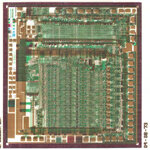levnu
Full Member level 2
Low profile/thinnest electronic circuits manufacture technologies
Hi to all,
Could someone pls advice me where can i get this info/sources:
- minimal thickness as possible of 2 layers PCB manufacture < 0.4 mm abilities/sources***
- minimal thickness as possible flex < 0.4 abilities/sources***
***can hold 1A amplitude of AC current.
- minimal thickness as possible ferrites < 0.4mm abilities/sources- operating freqs 0-1MHz
- And a general question on that issue:
what are the most thin electronic circuits/PCBs' you have ever known? can you please add links?
Thank you all
Hi to all,
Could someone pls advice me where can i get this info/sources:
- minimal thickness as possible of 2 layers PCB manufacture < 0.4 mm abilities/sources***
- minimal thickness as possible flex < 0.4 abilities/sources***
***can hold 1A amplitude of AC current.
- minimal thickness as possible ferrites < 0.4mm abilities/sources- operating freqs 0-1MHz
- And a general question on that issue:
what are the most thin electronic circuits/PCBs' you have ever known? can you please add links?
Thank you all
Last edited:

